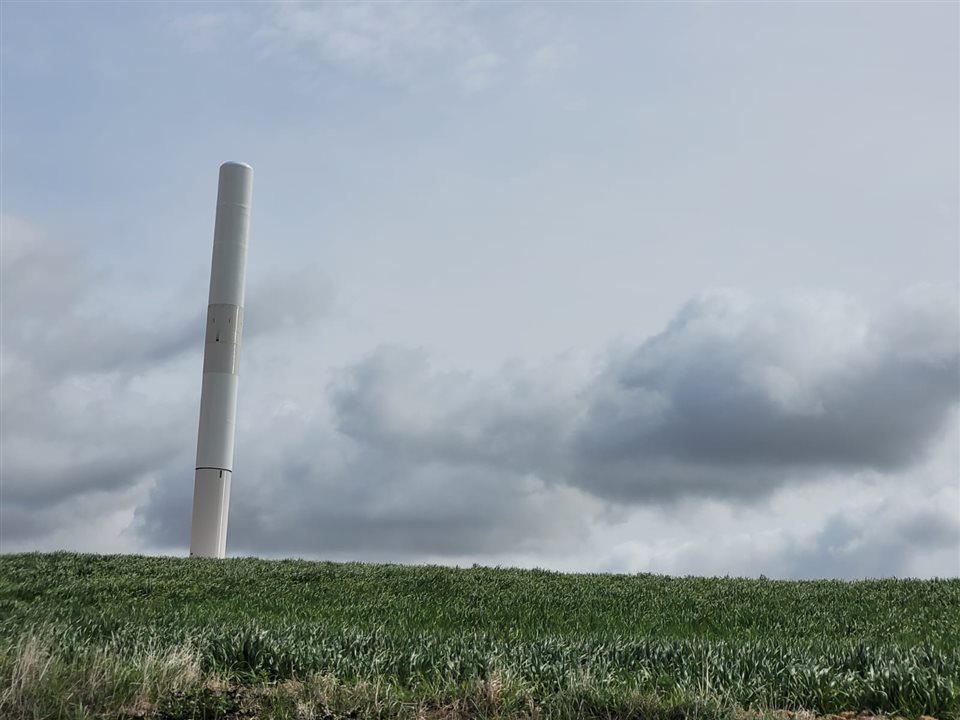
The bladeless wind turbines rely on vortex-induced vibration rather than spinning blades to generate electricity. (Image Credit: Vortex Bladeless)
Vortex Bladeless has introduced an innovative renewable energy solution: bladeless wind turbines. Instead of spinning blades, these units rely on vortex-induced vibration (VIV), a quiet process that generates energy while wind flows around the structure. Reducing risk to wildlife and maintenance associated with traditional turbines enables Vortex Bladeless to redefine the landscape for wind energy. Bladeless turbines are suited for supporting off-grid installations, powering remote sensors, and complementing solar panels.
So, how does it work? Wind flowing around the upright cylindrical mast (made of lightweight, durable material like carbon fiber and fiberglass) causes the structure to generate alternating vortices. This mast sways side to side across the wind as it gets hit by swirling air at a frequency matching its natural vibration. A linear alternator (base installation) uses magnets and coils to transform mechanical energy into electricity via electromagnetic induction.
Additionally, the alternator features a magnet-based tuning system that adjusts the mast’s elasticity so that it can adapt based on the wind speeds, maximizing energy capture over different conditions. Wind speeds as low as 3 m/s enable the turbine to generate power. It reaches maximum efficiency at 6 m/s, and if wind speeds surpass 30-35 m/s, the device automatically shuts down to keep it safe from potential damage.
Vortex Bladeless wind turbines are compact, which means they can be installed in arrays to take up less land space. They also reduce wake turbulence that may affect nearby units. Thanks to their small size, silent operation, and minimal aesthetics, the turbines are more suitable in cities and protected natural areas, where traditional turbines can’t be installed.
According to Vortex Bladeless, these units can reduce manufacturing and maintenance costs as they have a simpler design and require fewer moving components. However, the turbines generate less electricity than traditional types of equal size, making them practical for moderate-to-low power demands.
The company isn’t looking to replace conventional wind turbines and wants to integrate these for urban, distributed, and off-grid applications. Models like the Vortex Tacoma and Vortex Nano are suitable for small-scale power production, powering sensors, streetlights, or remote infrastructure, and complement solar panels. Vortex Bladeless is still developing the technology and researching the best way to boost efficiency.
Have a story tip? Message me at: http://twitter.com/Cabe_Atwell

Top Comments